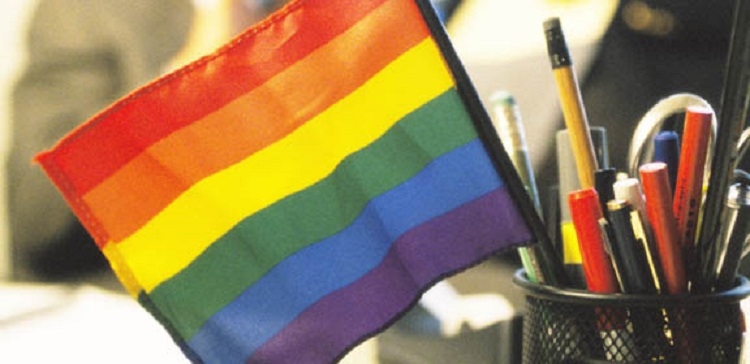You might think that, as modern people and societies, we have accepted and embraced all gender and sexual identities of people living in our community. But the truth is, for many LGBTQ members , verbal and physical harassment and assault, discrimination are still a reality, which they go through in their daily life. Schools, as LGBTQ students spend most of their time at school during the day, are main places where they experience those challenges. A 2017 national school climate study conducted by GLSEN, an organization focused on LGBTQ students at schools, found that over 70 % of these students have experienced verbal harassment and 55 % have been discriminated against based on their sexual orientation or gender identity. As a result of feeling more isolated and unsafe, LGBTQ students do not want to go to school, stay away from classroom during breaks, have low grades and go under depression. Since I have lived for 6 years in Turkey, based on my observations, it is not an easy thing for turkish community to accept and approve LGBTQ issues in daily life. So, as teachers, what can we do? How can we create a safe and welcoming atmosphere in the classroom and adopt LGBTQ inclusive pedagogies?

Source: glaad.org
I will mention about some ways to create safe and welcoming atmosphere and adopt LGBTQ inclusive pedagogies in the classroom based on my online search about these issues. First of all, we have to educate ourselves about LGBTQ issues. If you do not identify yourself as LGBTQ member, then, you have to spend some time in that community or read some blogs and stories on LGBTQ. “It’s always helpful to have a shared language when you’re talking about identity,” states Becca Mui, GLSEN’s Education Manager, in one of her interviews. More frequently, we have to check our own biases and beliefs related to this issue that can challenge and help us to become stronger allies. When there is harassment in the classroom during teaching period, we should not just ingore it. Instead, we have to acknowledge this act and stop it. If we do not take action, it can imply acceptance and approval. For further inclusive pedagogies, we always need to check our course materials and if necessary, we should replace them with a variety of gender representations and LGBTQ inclusive examples. By being interested and giving support to LGBTQ students while talking, teaching, they may feel that there is no wrong with their sexual orientation and gender identity. In conclusion, LGBTQ members are also the members of our society. Let's embrace differences and color of this world altogether.
For more information:
GLSEN's official website: www.glsen.org ;
The 2017 National School Climate Survey ;
GLSEN Safe Space Kit ;
GLSEN’s Elementary School Toolkit: Ready, Set, Respect!
What Is Gender Equality?
Before ''Why'' question we have to ask ''What'' question to define Gender Equality. Let's start focusing on the term itself. What is Gender Equality, then? According to Oxford Dictionary, it is the state in which access to rights or opportunities is unaffected by gender. So, it is the issue of being fair to both man and woman, boy and girl. In most societies, being a man or a woman is not simply a matter of different biological and physical features. Men and women experience different expectations about how they have to dress, behave or work in the family, in workplace and in schools. Gender inequality is not the subject of sex, it is the social norms which people built through the history of humankind by biases, fallacies and of course by th system of laws. In fact, governments and NGO's should promote gender equality with the great amount of effort all over the world.

Why To Promote Gender Equality?
As we have defined what the gender equality is, now we can move on with ''Why'' question. Why we should promote gender equality? As it stated in Sustainable Development Goals of United Nations, gender equality is not only a fundamental human right, but a necessary foundation for a peaceful, prosperous and sustainable world. Providing women and girls with equal access to education, health care, decent work, and representation in political and economic decision-making processes will fuel sustainable economies and benefit societies and humanity at large. Implementing new legal frameworks regarding female equality in the family, at school and business life is crucial to ending the gender-based discrimination prevalent in many countries around the world. How about the idea of practising gender equality perspective in classrooms and avoid gender bias and sexism in education.

How To Promote Gender Equality?
Now we can discuss about the ways to promote gender equality in schools/education. Can a man be a nurse? Is it possible for woman to become a doctor? I think these questions should have been answered long time ago. Moreover, while talking about gender equality the main concern has to be whether girls/women have an access to clean food, right to good quality education and career, equal opportunities to vote and to be voted. Education starts in family and goes at school. As teachers, how we can promote gender equality in our classrooms? Maybe it is better to start by challenging gender stereotypes. It is possible by choosing teaching examples that will help learners to go beyond their traditional perceptions. The next step is creating equal opportunities for male and female students to contribute to the lesson. Teachers should involve every learner during teaching/learning process. It can be achieved by mix-gender pairs/groups during class projects and discussions and alternative activities. It is also important to address the students equally. In addition, teachers have to use gender-neutral language in classroom and choose course materials that support both men and women. In conclusion, we should go beyond our cultural biases on gender issues and form new perception about it by empowering equal rights of men and women in social life and education.